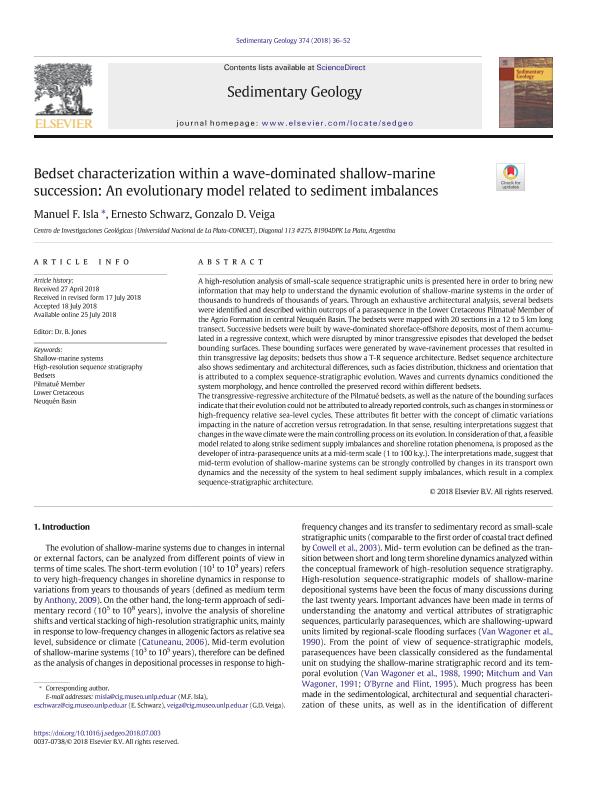Artículo
Bedset characterization within a wave-dominated shallow-marine succession: An evolutionary model related to sediment imbalances
Fecha de publicación:
10/2018
Editorial:
Elsevier Science
Revista:
Sedimentary Geology
ISSN:
0037-0738
Idioma:
Inglés
Tipo de recurso:
Artículo publicado
Clasificación temática:
Resumen
A high-resolution analysis of small-scale sequence stratigraphic units is presented here in order to bring new information that may help to understand the dynamic evolution of shallow-marine systems in the order of thousands to hundreds of thousands of years. Through an exhaustive architectural analysis, several bedsets were identified and described within outcrops of a parasequence in the Lower Cretaceous Pilmatué Member of the Agrio Formation in central Neuquén Basin. The bedsets were mapped with 20 sections in a 12 to 5 km long transect. Successive bedsets were built by wave-dominated shoreface-offshore deposits, most of them accumulated in a regressive context, which were disrupted by minor transgressive episodes that developed the bedset bounding surfaces. These bounding surfaces were generated by wave-ravinement processes that resulted in thin transgressive lag deposits; bedsets thus show a T-R sequence architecture. Bedset sequence architecture also shows sedimentary and architectural differences, such as facies distribution, thickness and orientation that is attributed to a complex sequence-stratigraphic evolution. Waves and currents dynamics conditioned the system morphology, and hence controlled the preserved record within different bedsets. The transgressive-regressive architecture of the Pilmatué bedsets, as well as the nature of the bounding surfaces indicate that their evolution could not be attributed to already reported controls, such as changes in storminess or high-frequency relative sea-level cycles. These attributes fit better with the concept of climatic variations impacting in the nature of accretion versus retrogradation. In that sense, resulting interpretations suggest that changes in the wave climate were the main controlling process on its evolution. In consideration of that, a feasible model related to along strike sediment supply imbalances and shoreline rotation phenomena, is proposed as the developer of intra-parasequence units at a mid-term scale (1 to 100 k.y.). The interpretations made, suggest that mid-term evolution of shallow-marine systems can be strongly controlled by changes in its transport own dynamics and the necessity of the system to heal sediment supply imbalances, which result in a complex sequence-stratigraphic architecture.
Archivos asociados
Licencia
Identificadores
Colecciones
Articulos(CIG)
Articulos de CENTRO DE INVEST.GEOLOGICAS (I)
Articulos de CENTRO DE INVEST.GEOLOGICAS (I)
Citación
Isla, Manuel Fermín; Schwarz, Ernesto; Veiga, Gonzalo Diego; Bedset characterization within a wave-dominated shallow-marine succession: An evolutionary model related to sediment imbalances; Elsevier Science; Sedimentary Geology; 374; 10-2018; 36-52
Compartir
Altmétricas




